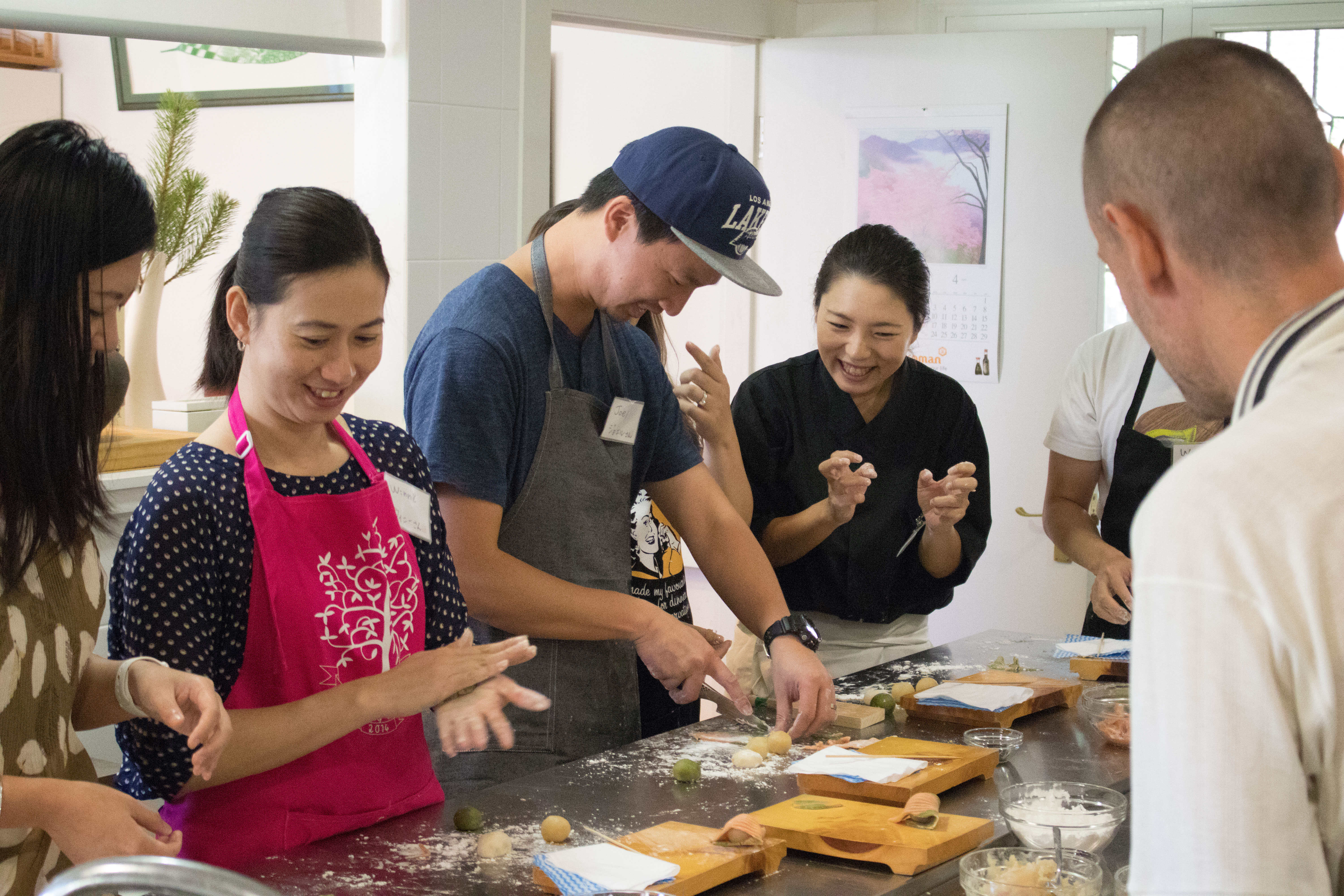
The latest Washoku Lovers Kitchen Japanese cooking class was all about wagashi traditional confectionary! Japanese confectionary is very unique and contrasts to western sweets which are typically very sugary. Japanese wagashi on the other hand, use minimal sugar and no oil, they’re mainly made out of sweet bean pastes and their flavours and appearances focus on the seasons of the year.
We made two types of sweets, nerikiri and daifuku, and had matcha tea to go with it. If you ever go to a tea ceremony or a tea house in Japan, you’ll be served a wagashi before you’re given the tea to offset the bitterness of it.

Making fresh mochi
Nerikiri are often shaped in different ways for different seasons, and we chose to do a folded lead for the Australian Autumn, and a hummingbird for the Japanese Spring. The name nerikiri refers to making a ‘net’ when mixing the an white bean paste, which really just means that the paste is spread out or ripped apart then put back together repeatedly to get a super smooth texture.
Flavoured balls of bean paste (we had chocolate, Ume made from CHOYA Umeshu, and matcha available) are inside the folded leaf and hummingbird to give some flavour contrasts.

Daifuku is made from fruit, bean paste, and fresh mochi! We all really love mochi so it was nice to make mochi and work with it while it was warm and fresh. There were a bunch of different fruits available, and you can use whatever your favourite fruit is. Cover the fruit in a bean paste of your choice, and then wrap the whole thing in mochi. It’s super simple and easy to make!
Everyone had a lot of fun customising their daifuku and nerikiri and we had a lot of cute and creative sweets at the end of the day. Before eating, everyone got to make their own hot matcha tea and learn how to whisk it.

If you want to join our next class, make sure you sign up to receive our newsletter – it’s where we announce the classes!